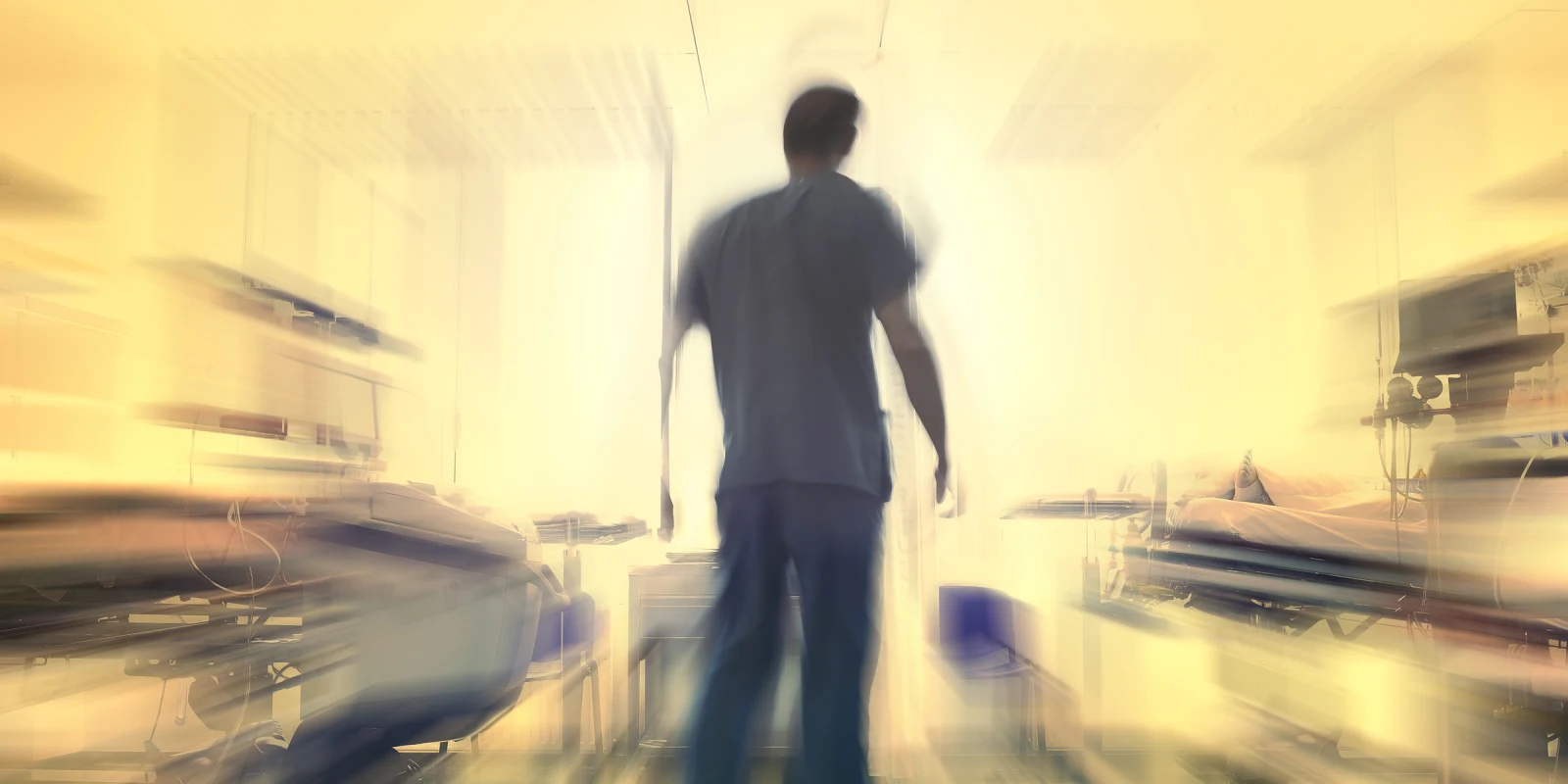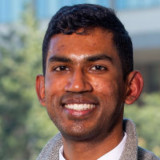I gripped the bucket of ice water and awaited my attending’s orders, her having already emphasized the importance of limiting warm ischemia time. Before me laid a man cut pubis to sternum, retractors peeling open his abdomen and thorax. Eerily, as the clock struck midnight, my attending clamped the aorta and cut the man’s vena cava. Suddenly, blood gushed everywhere. I dumped the ice into the abdominal cavity and reached for a Poole sucker to sop up the mauve life-sustaining fluid. We waited. Seconds turned to minutes.
My weary eyes darted around the room to soak up the details of the macabre scene. As Prince crooned in the background, the scrub nurse tapped a beat. The drape maintaining the sterile field hid the gentleman’s face, a seemingly intentional signal that this was just a body, an assemblage of organs. No one seemed fazed by the proceedings. I was grateful for the surgical mask that concealed the surprise painted across my face, a sign of the uninitiated. My attending motioned to the heart, quivering, writhing, furiously trying to perfuse the man’s organs. “That is what ventricular fibrillation looks like,” she remarked. Ten minutes passed before the monitors finally showed a flatline. Asystole. The anesthesiologist asked sincerely, “Do we need to declare a time of death?” My attending curtly responded, “No, that’s already been done.” Her confidence subtly betrayed her uneasiness with the question.
My mind rewound back 90 minutes prior when the man was wheeled in. As we moved him from the gurney to the OR table, I placed my hand on his legs and was surprised at their remarkable redness and warmth. “Is this what death looks like?” I silently queried as humming monitors and machines supported his body tenuously between life and death. As a third-year medical student at the time, I still felt uneasy in the OR. Fearing the reproaches of more seasoned personnel, I stood with my arms tucked lest I contaminate anything. My eyes were drawn to the prostrate figure before me. He looked so young. His beard was still well manicured, a clue to the sudden nature of his demise. What had happened? My attending mentioned only that he died of a drug overdose. What had led him down the path of IV drug use? Who mourned him? What dreams did he leave unrealized, promises unkept? Did any of these questions weigh upon the minds of any of the others in attendance?
Medicine and its technological embrace have changed what death is and what it looks like; as I realized that night as a medical student, one can be brain-dead and yet still warm to the touch. While grappling with this dissonance can be quite jarring for families, particularly in cross-cultural contexts, we in medicine seem to accept it as fact. As I heard a hospital ethics committee member remark in discussing a particularly tragic case, “At the point that the patient was declared brain-dead, he became a corpse.” Such rhetoric extends beyond discussions of death and structures our experience. On inpatient rounds, patients with multiple co-morbidities are noted to have a poor “protoplasm” or “substrate.” What fuels such dehumanizing language and this sterile relationship with death?
I believe part of the answer lies in the fact that, although most health care practice takes place in the outpatient setting, most medicine residency programs remain intensively inpatient-focused. There, we are relentlessly exposed to instances of debility, despair, and death. Much like the organ donor suspended between life and death, we exist in a liminal state. Although we hold the qualification of MD, we still have much to learn on the job. Significant cognitive bandwidth is spent on trying to navigate the labyrinthine process of care and on expanding our clinical reasoning beyond the theory learned in medical school. How do I order home oxygen? What is the appropriate ICD-10 code for this disability paperwork? Should I be worried about this patient’s thrombocytopenia? If you are like me and rotate through several hospitals and clinics, all of which have their own EHR and idiosyncrasies, these headaches multiply.
Lost in the fray is quality time to sit with patients and to attend to their suffering beyond the technocratic delivery of care. The physical and cognitive exhaustion that accompanies work weeks often exceeding 80 hours precludes time to process the moral distress erupting out of constant exposure to illness and infirmity. Trainees’ ability to empathize with patients declines over time. It is no wonder why burnout and depression are rife among residents. As I think back on that night in the OR five years ago, the raw and sincere emotions I felt seem foreign to me. The extent to which I have become inured to the shocking nature of death frightens me.
System changes to mitigate against this erosion of empathy and to restore wellness and humanity to medicine in the face of illness and death will take time. There are, I think, a handful of ways in which we may start this process at an individual or departmental level. First, rituals and habits abound in medicine. I have started folding a paper crane with a short message for each of my patients who have died, a memorial to the lives that were. An attending I admire wears black the day after a patient passes away. In the vein of mindfulness, these practices can draw our attention to the pain that can come with these losses. Although each death brings with it the paperwork required to issue a death certificate, finding ways to depart from the “mechanical” or “action mode” and “simply be present,” can be restorative.
Second, I have started to ask my patients, “What is something that brings you joy in life?” They are often surprised at the question. I find it not only lightens the tenor of our conversation but also helps me to remember them as individuals rather than as a collection of pertinent clinical details. Third, members of my institution have pioneered the concept of death rounds and sunset rounds to explicitly attend to the complex emotions that follow from medicalized deaths and to debrief any concerns team members may have had around the death as well as aspects of care that went well. Acknowledging the trauma that accompanies training is important. Being intentional about reflection and changing my practices, I hope, can facilitate healing not only for myself but also for those with whom I work and care.
What do you remember from you first time of death? How has your relationship with death changed since then?
Dr. Anand Habib is a third-year internal medicine resident at University of California, San Francisco. Originally from Houston, Dr. Habib completed his undergraduate work with honors at Stanford, worked as a Global Health Fellow at a clinic in Haiti's central plateau, finished a masters degree with distinction in Medical Anthropology at Oxford University as a Rhodes Scholar, and earned a medical degree from Harvard Medical School. He has previously studied the use of therapies for hematologic malignancies and oncologists' feelings of prognostic uncertainty in advanced lung cancer and is currently pursuing interests at the nexus of ethics, health policy, and distributive justice. He is a 2021–2022 Doximity Op-Med Fellow.
Image by sfam_photo / shutterstock







